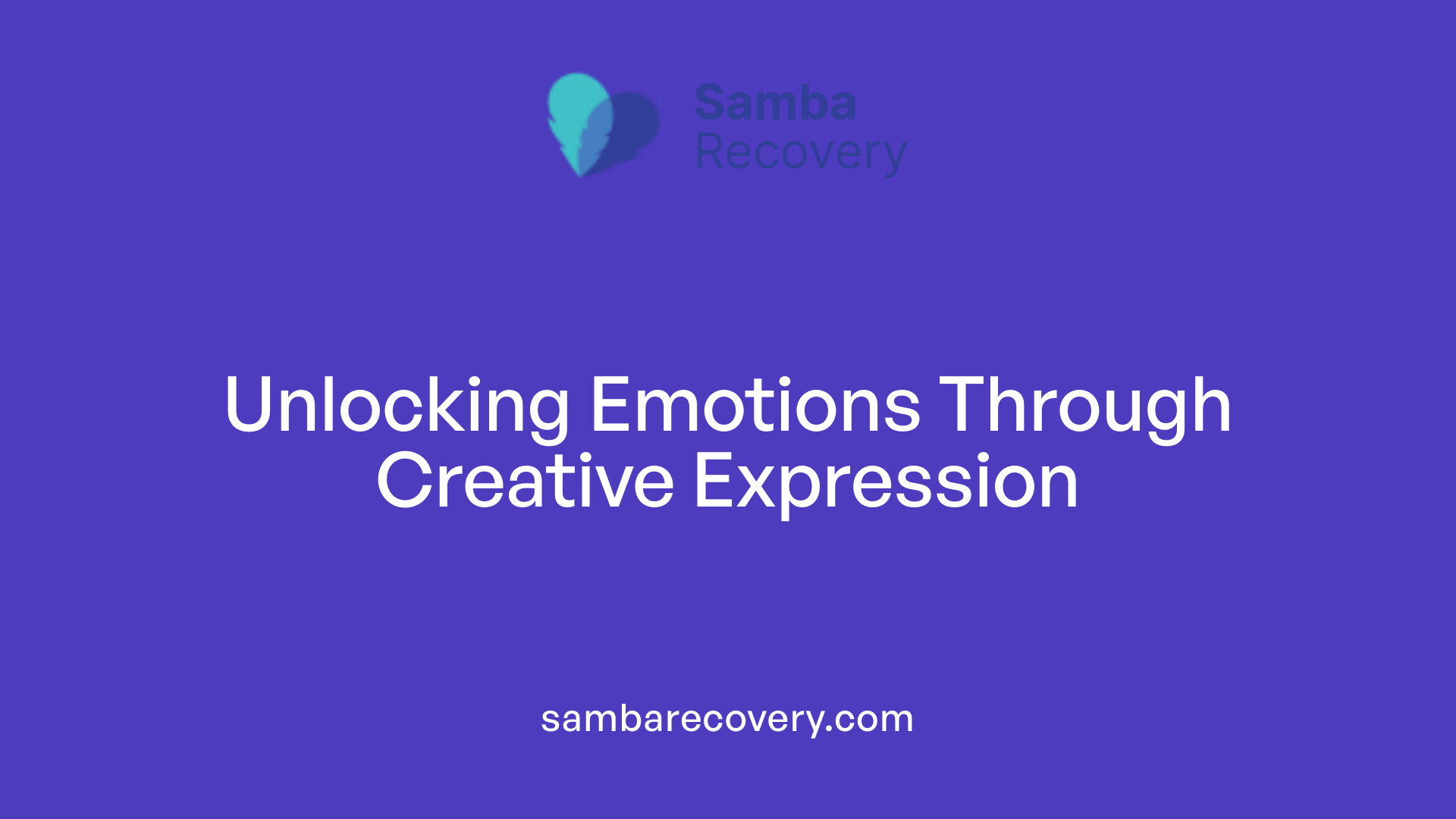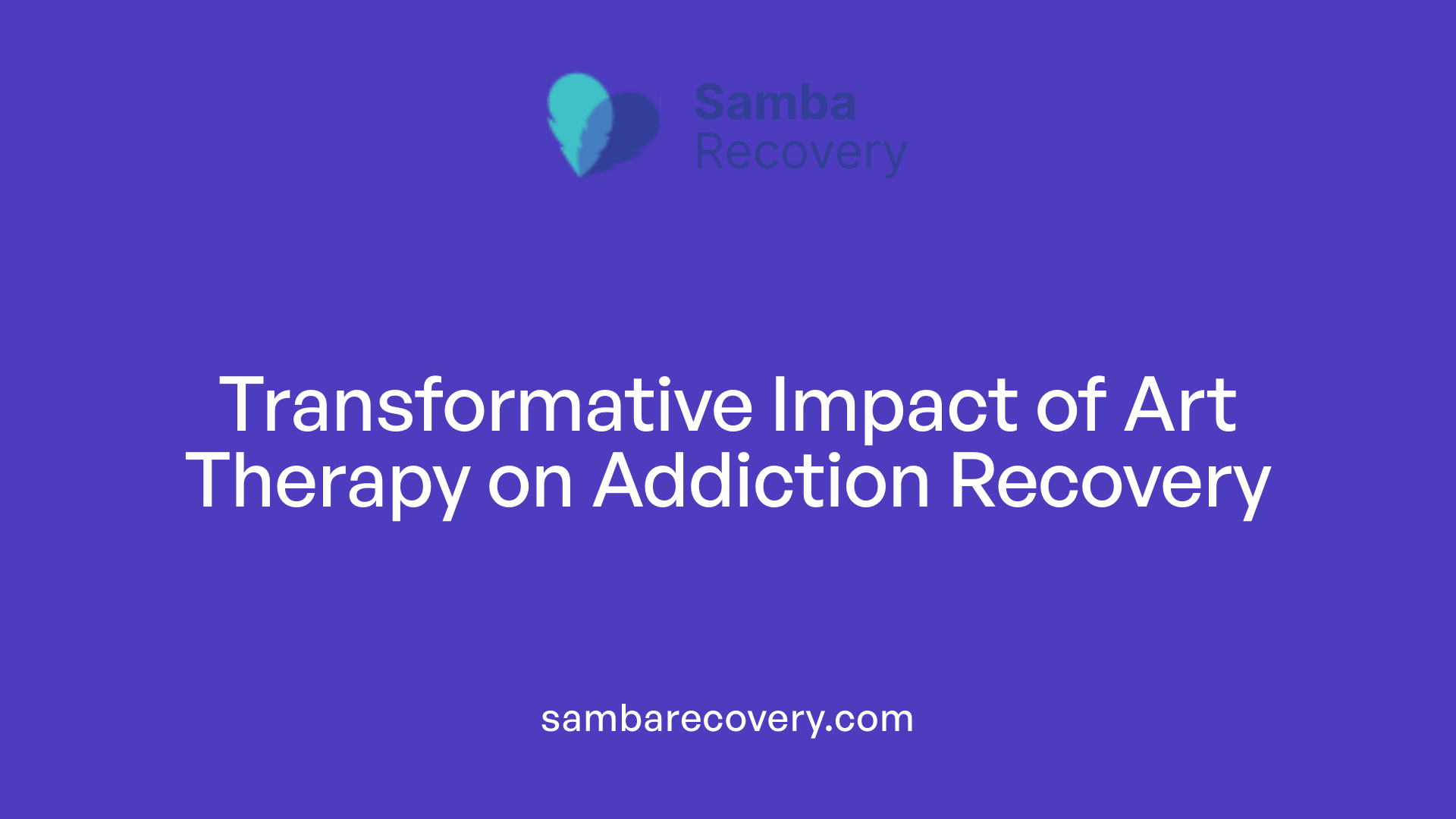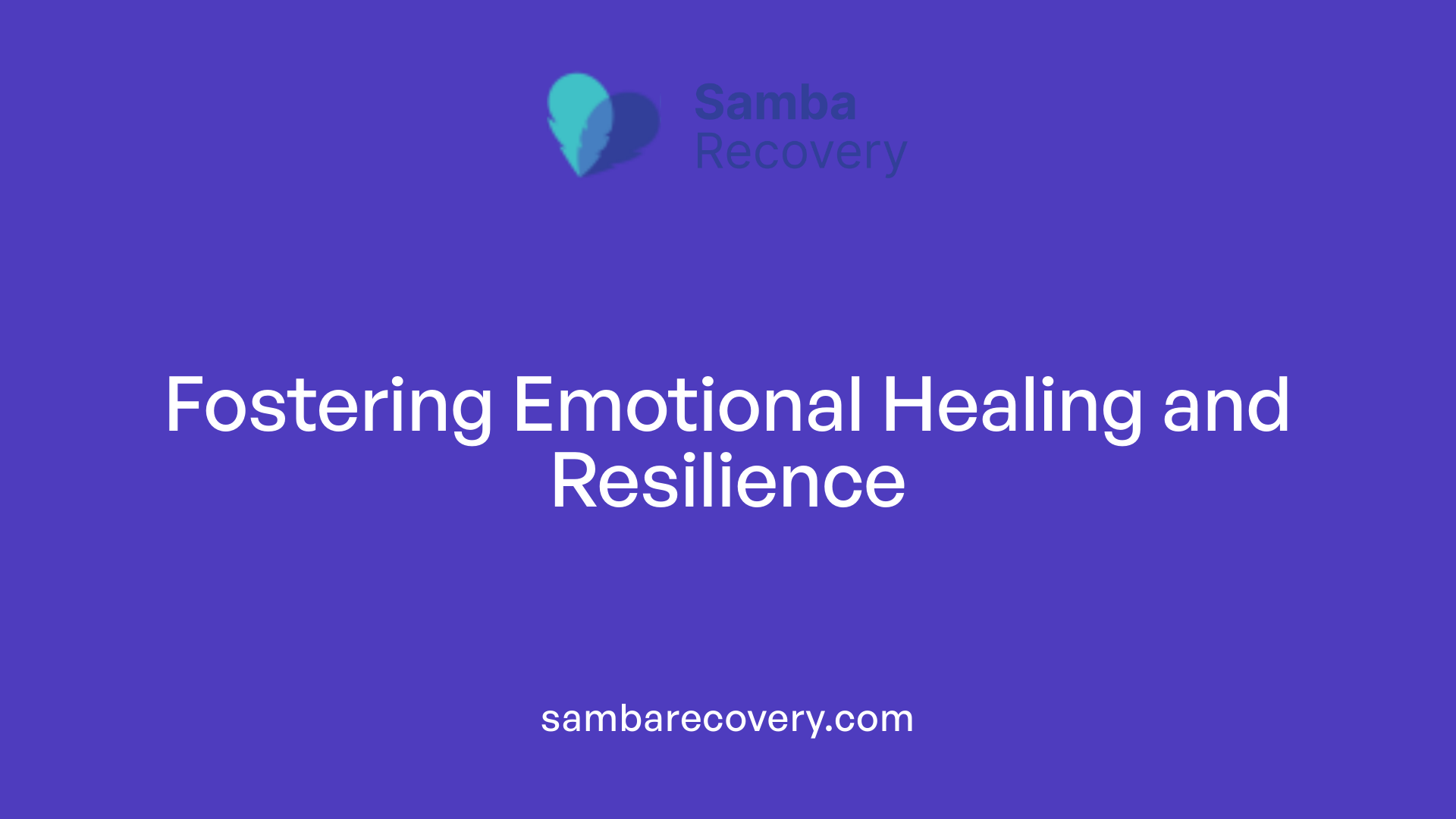Introduction
Art therapy has emerged as a critical component in addiction recovery programs, providing a unique and effective means of emotional exploration and healing. By allowing individuals to express complex emotions in creative, non-verbal ways, art therapy assists in unraveling the complexities of addiction and fostering personal development. This therapeutic method offers a safe space for self-discovery and is increasingly recognized for its role in enhancing traditional addiction treatment approaches.
How Art Therapy Facilitates Addiction Recovery

Creative expression in addiction recovery
Art therapy serves as a vital tool in addiction recovery by providing a unique avenue for individuals to express emotions that are often difficult to verbalize. Engaging in creative activities such as painting, drawing, or sculpture gives participants a safe space to explore and process complex feelings associated with their addiction. This form of self-expression can lead to greater self-awareness, enabling individuals to introspectively reflect on their journeys, identify triggers, and develop healthier coping strategies.
Through arts, participants can articulate feelings of anger, sadness, or frustration in a non-destructive way, promoting emotional healing. Furthermore, it fosters a sense of accomplishment, which is crucial for boosting self-esteem and motivation during recovery.
Methods used in art therapy
Art therapy employs various methods to facilitate emotional expression and healing. Some prominent techniques include:
| Method | Description | Benefits |
|---|---|---|
| Gestalt method | Participants create artwork and discuss the emotions tied to it, enhancing self-reflection. | Promotes emotional awareness |
| Active imagination | Encourages free expression through art, allowing for spontaneous creativity and exploration of feelings. | Fosters uninhibited self-expression |
| Third-hand method | The therapist creates artwork based on client instructions, activating communication and insight. | Bridges communication gaps |
These methods guide individuals in exploring their emotional landscape and the impact of their past experiences on their addiction.
Complement to traditional therapies
Art therapy is not a standalone approach; it is often integrated with traditional therapies like 12-step therapy and cognitive-behavioral therapy (CBT). This holistic combination enhances the recovery process by providing participants with tools to manage cravings and prevent relapse. By engaging in art therapy, individuals can discuss their artistic processes with therapists, facilitating meaningful conversations about their personal challenges with substance use.
Overall, art therapy complements conventional treatment modalities by enhancing emotional regulation, improving communication skills, and building a supportive community, all of which are essential for successful addiction recovery.
The Multifaceted Benefits of Art Therapy in Recovery Programs

What are the benefits of art therapy in addiction recovery?
The benefits of art therapy in addiction recovery are numerous and impactful. This holistic approach offers individuals a non-verbal means to express their feelings, particularly beneficial for those who struggle with verbal communication due to trauma or the effects of substance abuse. Techniques such as drawing, painting, and journaling aid in emotional management, allowing clients to explore and articulate complex feelings that may be difficult to verbalize.
Engaging in these creative processes fosters motivation for change throughout recovery, promoting greater self-awareness and emotional regulation. For example, activities like self-portraits and collages provide tangible avenues for participants to reflect on their journeys and envision their futures.
Research support for art therapy
Research shows that approximately 36.8% of U.S. substance abuse treatment programs now incorporate art therapy, highlighting its growing acceptance as a valuable treatment method. Studies indicate that art therapy can significantly reduce symptoms of anxiety and depression, with one 2022 study revealing that 68% of individuals who participated in art therapy reported decreased substance use.
Furthermore, integrating art therapy into inpatient care fosters feelings of safety and support, vital for effective healing and recovery. This supportive environment enables clients to manage stress, enhance self-esteem, and develop healthy coping mechanisms, making art therapy a crucial component in many recovery programs.
Promoting Emotional Healing Through Creative Expression

Why is art therapy important in emotional healing and coping mechanisms?
Art therapy plays a crucial role in emotional healing and coping strategies, especially for those navigating addiction recovery. It provides a non-verbal outlet for individuals to express complex emotions that may be challenging to articulate through traditional talk therapy.
Through the creative process of painting, drawing, or sculpting, clients gain insight into their feelings while enjoying the therapeutic benefits of self-exploration. This unstructured environment encourages emotional release, thereby enhancing cognitive functions such as focus and problem-solving skills. Engaging in art can also boost self-esteem and foster a sense of accomplishment, vital components for resilience.
Research supports the effectiveness of art therapy in reducing symptoms of stress and anxiety. It allows individuals to externalize pain in constructive ways, which alleviates underlying emotional turmoil tied to addiction. Practicing art has also been shown to lower cortisol levels significantly, with even brief sessions of artistic creation yielding substantial stress relief.
In addition to providing coping mechanisms, art therapy fosters a community environment that reduces isolation and enhances communication among participants. This holistic approach not only addresses the symptoms of addiction but also nurtures the individual’s journey toward overall well-being, promoting long-term recovery and emotional stability.
How does art therapy enhance cognitive functions?
The engaging nature of creating art promotes better focus and enhances cognitive flexibility. Participants often experience improved problem-solving skills as they navigate their artistic endeavors and make creative decisions.
What are the effects of art therapy on stress and anxiety levels?
Art therapy can dramatically reduce stress and anxiety, providing individuals with techniques that replace unhealthy coping strategies. The act of creating art serves as a cathartic release, helping individuals manage triggers and cravings associated with addiction.
| Aspect | Benefits | Example Activities |
|---|---|---|
| Emotional Healing | Externalizes feelings | Drawing self-portraits, creating affirmation cards |
| Cognitive Functions | Enhances focus and problem-solving | Engaging in group art sessions |
| Stress Reduction | Alleviates anxiety, lowers cortisol | Participating in mindfulness-based art exercises |
| Community Building | Promotes social skills and support | Collaborative art projects, sharing artwork in groups |
Integrating Art Therapy with Traditional Treatments

How does art therapy integrate with traditional treatment methods?
Art therapy seamlessly merges with traditional treatment methods by offering a creative dimension that enhances established evidence-based approaches, such as cognitive-behavioral therapy (CBT) and motivational interviewing. This integration provides clients with a unique opportunity to express emotions and thoughts that might be challenging to articulate verbally, particularly in the context of trauma related to addiction.
By combining medical detox and medication-assisted treatment (MAT) with creative expression, art therapy helps individuals develop vital coping strategies that bolster emotional resilience. The non-verbal nature of art therapy encourages participants to process complex feelings while alleviating stress and anxiety, making traditional therapies even more effective.
Role in processing trauma
Art therapy serves as a vital tool for processing trauma within the framework of addiction recovery. In a supportive environment, individuals can confront their experiences and emotions related to substance use, unlocking pathways to healing that might remain inaccessible through verbal communication alone. Activities such as self-portraits and collages enable deeper emotional exploration, allowing for significant breakthroughs.
Holistic treatment plans
This multifaceted approach contributes to holistic treatment plans tailored to address the diverse needs of individuals struggling with substance use disorders. By fostering a balance of cognitive, emotional, and creative interventions, art therapy promotes a comprehensive recovery experience, supporting self-discovery and personal growth throughout the healing journey.
The Holistic Benefits of Art Therapy in Addiction Recovery
How Does Art Therapy Facilitate Self-Awareness Development?
Art therapy enhances self-awareness by allowing individuals to explore their emotional landscape through various creative activities. This process encourages introspection as participants reflect on their experiences and emotions without the pressure of verbal expression. This non-confrontational approach can lead to significant breakthroughs, enabling clients to identify triggers and understand the cycles of their addiction, which is crucial for sustaining long-term recovery.
In What Ways Does Art Therapy Aid in Trauma Processing?
Art therapy provides a unique avenue for trauma processing, offering individuals a safe space to express painful emotions and revisit past experiences creatively. By externalizing their feelings through art, clients can confront suppressed trauma that may contribute to their substance use disorder. This method helps in building resilience, allowing participants to release complex emotions like anger and sadness without reliving them verbally, facilitating deeper healing.
How Does Art Therapy Help in Rebuilding Self-Esteem?
Participation in art therapy often leads to improved self-esteem as individuals create tangible representations of their thoughts and feelings. Completing art projects fosters a sense of accomplishment, allowing clients to take pride in their creativity and insights. In a supportive environment, clients can share their work, enabling connections that promote mutual understanding and support, further bolstering self-confidence during recovery.
Art Therapy Techniques and Exercises Used in Recovery
Common Art Therapy Exercises
Art therapy employs various techniques that allow individuals to explore their emotions and experiences creatively. Some effective exercises include:
- Self-Portraits: Participants create self-portraits that represent their current feelings and envision future possibilities in recovery.
- Collages: These explore the costs and benefits of addiction compared to sobriety, facilitating decision-making.
- The Recovery Bridge Drawing: This prompts patients to visualize their journey through substance use and aspirations for recovery.
Impact on Emotional Processing
Engaging in art helps individuals process complex emotions related to addiction, like fear and trauma. Creating tangible representations of feelings can lead to breakthroughs, allowing deeper discussions with therapists. For many, this non-verbal expression is key to understanding and addressing severe emotional pain that words may not capture.
Role in Relapse Prevention
Art therapy equips individuals with essential coping strategies that replace unhealthy habits. The creative process diminishes cravings and alleviates stress, acting as a powerful tool to prevent relapse. Activities like making affirmation cards promote positive reinforcement, which enhances self-esteem and fosters a more resilient mindset toward sobriety.
Success Stories: Art Therapy’s Impact on Individuals
Personal Anecdotes in Art Therapy
Many individuals in recovery have shared powerful stories about how art therapy changed their lives. For instance, Jenna, a young woman in her twenties, discovered her passion for painting while in treatment. Through this creative outlet, she expressed emotions she had bottled up for years, promoting healing from her addiction. Another participant, Mike, used sculpting as a medium to confront his past traumas, allowing him to articulate feelings he struggled to voice in traditional therapy sessions.
Research Findings
Studies reveal that art therapy significantly benefits individuals dealing with addiction, showcasing over 68% of participants reporting reduced substance use after engaging in creative activities. Moreover, reports indicate that art therapy practices lower anxiety and stress levels, vital for individuals facing the challenges of recovery.
Transformed Lives in Addiction Recovery
The transformations observed in individuals through art therapy are remarkable. Many participants have noted enhanced self-esteem and a newfound purpose, often leading them to pursue careers in artistic fields or work as advocates for addiction recovery. These stories of resilience highlight art therapy’s crucial role in navigating the emotional complexities of addiction, providing a healthy outlet for self-expression and emotional processing.
Conclusion
Art therapy has proven to be a powerful therapeutic tool in addiction recovery, facilitating emotional healing, fostering self-awareness, and providing a comprehensive complementary treatment to traditional methods. By addressing the complexities of addiction through creative expression, art therapy supports individuals in their journey towards healing and long-lasting recovery. Its adoption in rehabilitation programs continues to grow, highlighting the importance of holistic approaches in treating substance use disorders.
References
- The Role of Art Therapy In Addiction Recovery | NCTC
- The Use of Art and Music Therapy in Substance Abuse Treatment …
- 7 Benefits of Art Therapy for Addiction Recovery
- Art Therapy for Addiction: Painting Paths to Recovery
- Role Of Art Therapy In Addiction And Mental Health
- The Benefits of Creative Arts During Addiction Treatment
- The Role of Art Therapy in Addiction Recovery – INTEGRIS Health
- Benefits of Art Therapy During Addiction Treatment – Rehabs.com
- 5 Benefits of Art Therapy for Addiction Recovery | TX






